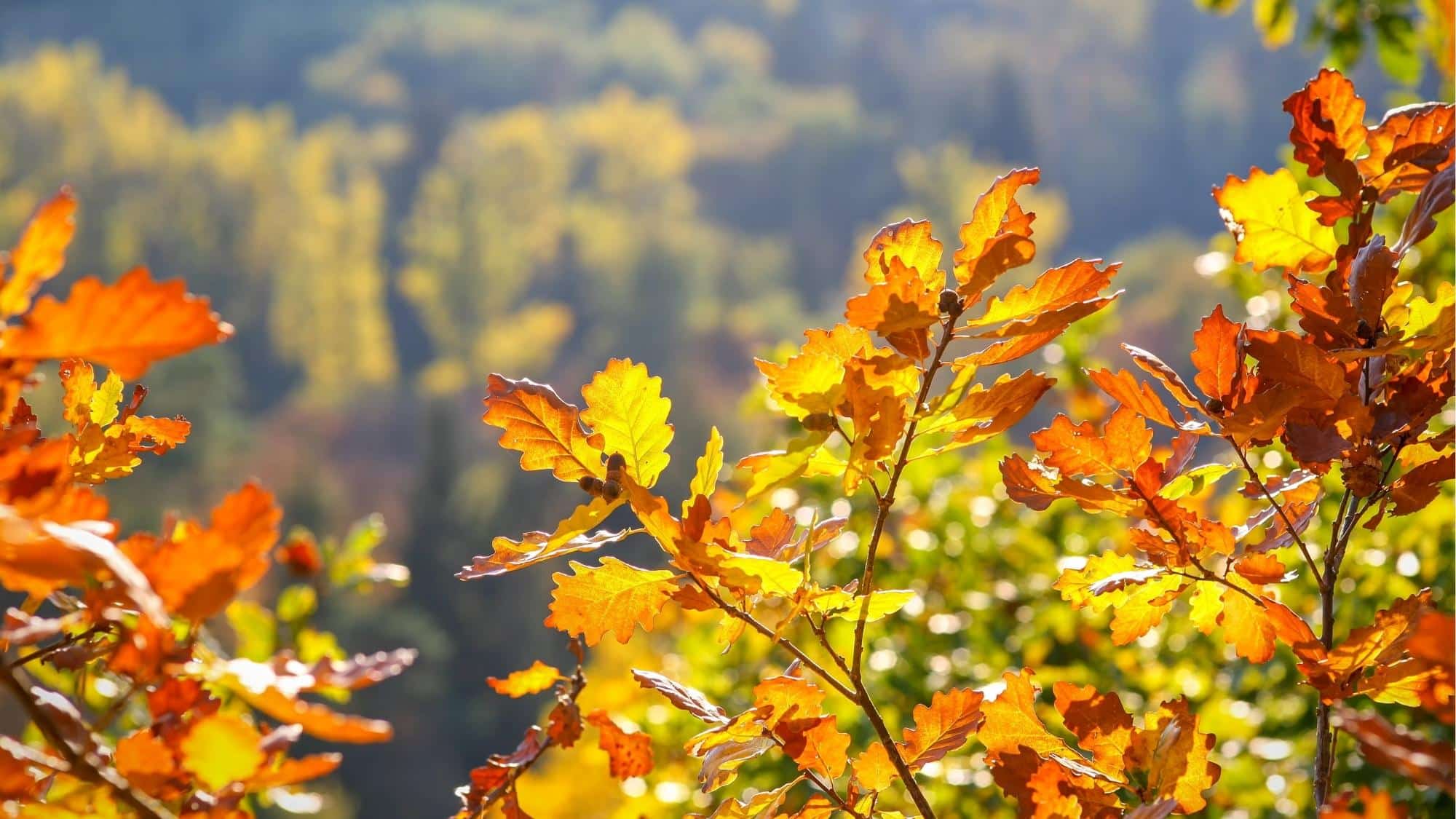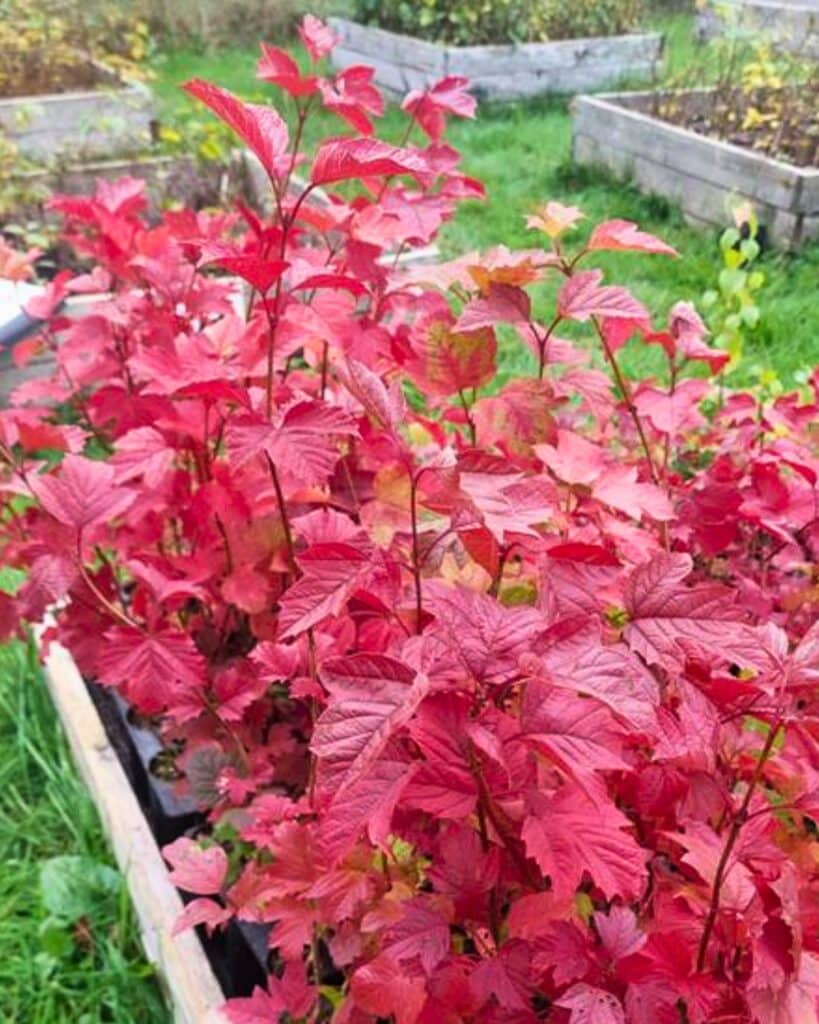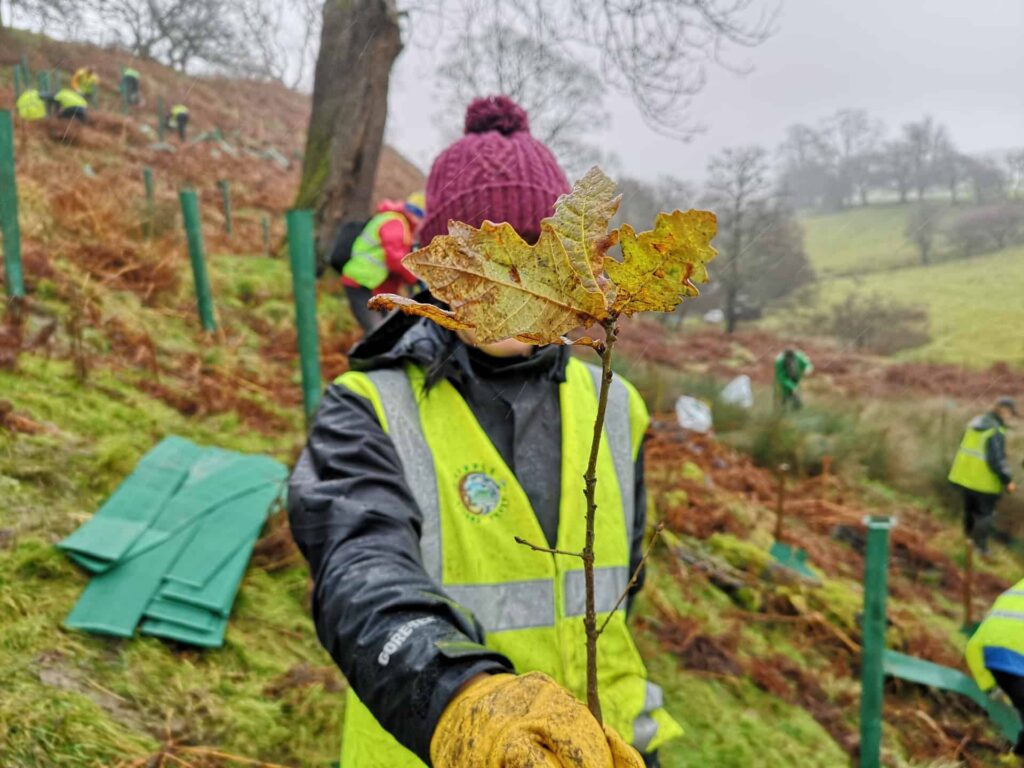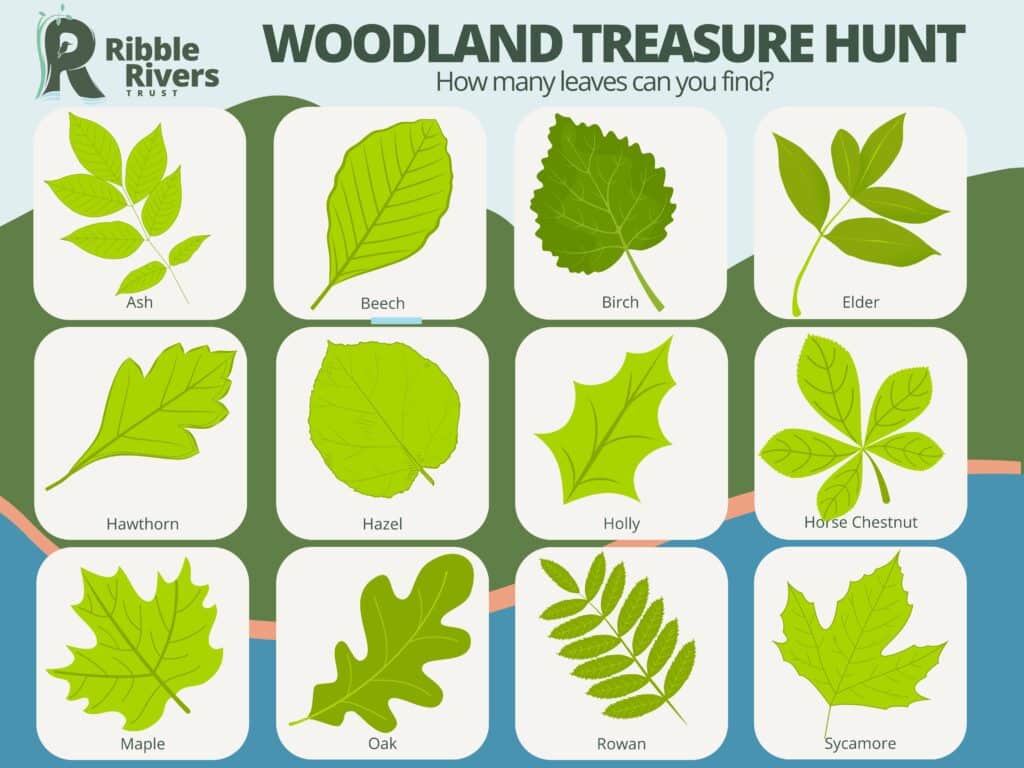
Why do Leaves change colour in autumn? The Science Behind The Scenery
It’s that time of year when our wonderful woodlands give us one last spectacle, with a glorious show as the leaves change colour in autumn before the trees retreat into dormancy for the winter.
Did you know that the fresh vibrant green leaves that adorn our trees in summer already contain these autumn colours? Tree leaves are covered in a layer of green chlorophyll (the chemical that changes carbon dioxide and water into tree food), which camouflages the golds, reds, and yellows.
So why do leaves change colour in autumn?

As temperatures start to drop and days become shorter, leaves start to receive less sunlight. This triggers a clever reaction which causes chlorophyll to break down and stops the tree from making more. Now that the chlorophyll has gone, the trees are free to showcase their hidden colours!
There are two chemicals that contribute to this range of colours; carotenoids and xanthophylls. If these sound familiar, it’s because these pigments add colour to carrots, pumpkins, orange peppers, corn, and pink grapefruit.
Some species also have an extra stage to this seasonal transformation. Anthocyanins cause a red colour in some leaves. This is a normal stage for some species of tree, but it can also be due to a high level of sugary, energy rich tree food in the tree sap. If this is the case the tree will try it’s best to get as much of this energy as possible by releasing anthocyanins which help the tree use this energy efficiently before winter.
Where do the autumn leaves disappear to?
Once the leaves have served their purpose, the tree sheds them. They’re no longer needed the tree is dormant, so it isn’t using any energy. Plus, in spring, they’ll need to grow new ones as quickly as possible.
However, the leaves don’t go to waste! All these fallen leaves are rich in nutrients. In fact, they act as compost for trees, adding lots of goodness into the soil ready for spring growth. Bacteria, fungus, and detritivores like woodlice, slugs, millipedes, and worms eat their way through the leaves, transforming them into soil as they munch their way through winter.
Looking to see this spectacle for yourself? Why not take a autumn stroll on one of our circular walks.

Why is a rivers trust so passionate about trees?
Ribble Rivers Trust use a Catchment Based Approach (CaBA) to river conservation. A river catchment is the area of land that surrounds a river, and every drop of rain that falls within its boundaries will eventually find its way into that river system. For us, that means the Ribble Catchment and the River Ribble.
As rainwater travels through the catchment, it flows across farmland, through towns and cities, and past industrial areas, picking up pollutants along the way. By caring for the entire catchment, rather than focusing on individual sections of river, we can help reduce the amount of pollution that reaches our waterways.
Plus, when our team first began to gather data on the issues facing our rivers, we realised that woodlands play a vital role in tackling almost every challenge our rivers face. Industrial, urban, and agricultural pollution, degraded habitats, flooding, and even drought can all be improved, to varying degrees, by planting the right trees in the right places.
Circular walks
Looking to see this spectacle for yourself? Why not take an autumn stroll on one of our circular walks, and take our leaf hunting guide and turn your woodland walk into some family fun!


Rivers are at the heart of our local landscapes. Whether you’re casting a line, exploring a riverside trail, or simply basking in the beauty of nature, you can help protect these special places now, and for generations to come.
By becoming a Ribble Rivers Trust supporter for just £3 a month, you’ll be funding real, on-the-ground action.
Ready to make a difference? Learn more here: ribbletrust.org.uk/become-a-supporter

